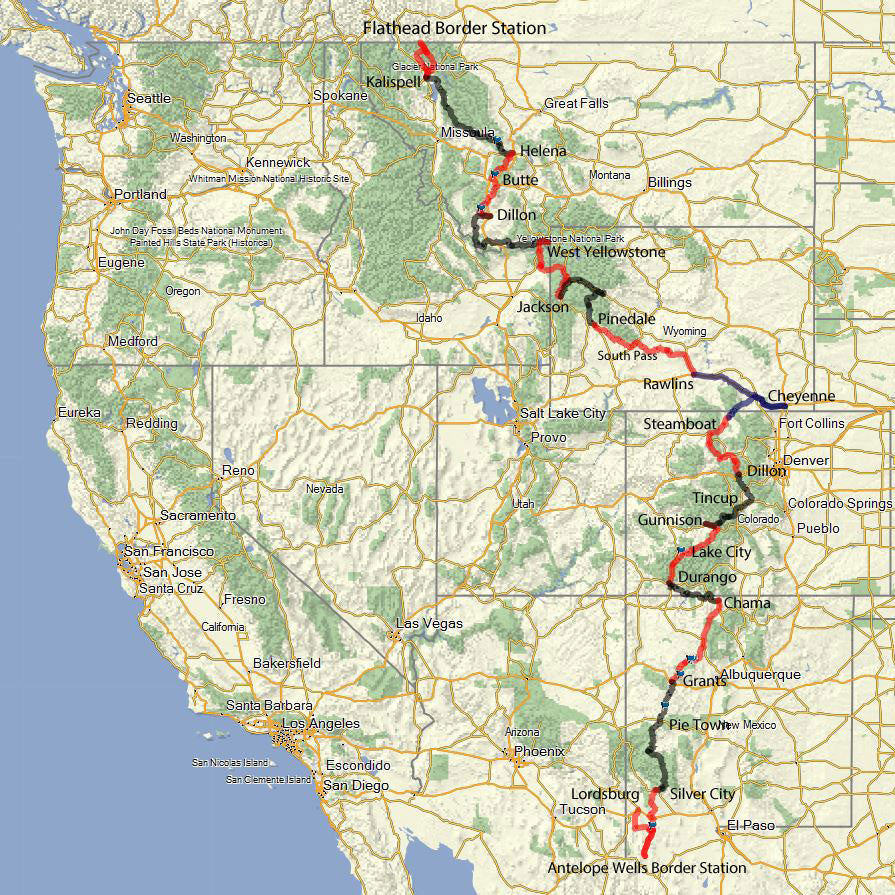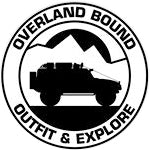Overlanding
Overland Journal describes it best:
“Overlanding is about exploration, rather than conquering obstacles. While the roads and trails we travel might be rough or technically challenging, they are the means to an end, not the goal itself. The goal is to see and learn about our world, whether on a weekend trip 100 miles from home or a 10,000-mile expedition across another continent. The vehicle and equipment can be simple or extravagant - they, too, are simply means to an end. History, wildlife, culture, scenery, self-sufficiency - these are the rewards of overlanding.”
What Is Overlanding?
Overlanding has invaded all corners of the globe, as vehicles and transportation modes become more advance, less and less goes unexplored. #Overlanding refers to a type of off-road and off-grid activity where you camp out and discover uncharted territory and cultures, using a vehicle equipped for all terrains. Overlanding is the world’s greatest adventure and quite possibly the reason you decided on that powerful vehicle with four wheel drive.
Once you have an outfitted vehicle; whether its a pickup like the Tacoma, an SUV like the Land Rover, or something more compact like the Subaru Crosstrek or Outback, you’re ready to challenge yourself and take an expedition into the open (dirt) road.
A dirty fact of overlanding is you need a reliable rig with reliable equipment.
The Basics and Purpose of Outfitting Your Rig
To get started, you’ll want to be sure you know what’s involved in a successful overlanding expedition and how to be prepared. Since there are no paved roads and minimal assistance available, your rig has to withstand the stress of rocks, sand, water and everything in between. In a previous blog, we talked about the importance of support from your suspension and shocks for a consistent and predictable ride. Now that we’re off-roading, you’ll need to think about those components and if they can withstand the rigors of aggressive terrain. Poor shocks lead not only to shock failure, but further wear, tear, and damage on mounts, tie rods, steering parts, and tires.
We've got a few different brands at Shock Surplus that are best suited for overlanding adventures for any budget, including:
Old Man Emu BP51 / Nitrocharger Sport
Old Man Emu BP51 / Nitrocharger - these premium dampers allow full compression and rebound adjustment by a pair of rotating collars. Currently on limited availability for some Toyota and Jeep models.
Fox CD or DSC Adjustable Shocks
Fox CD or DSC Adjustable Shocks - these are two types of adjustable shock sets we discussed as an essential upgrade if you’re considering overlanding, the adjustment options allow for fine tuning of handling characteristics on your expedition.
Icon Vehicle Dynamics CDC Shocks
Icon Vehicle Dynamics CDC Shocks - another premier level shock with adjustable compressions that are affordable and high performance.
King Offroad Shocks
If you're wondering what all those blue coils and shocks are under lots of offroad vehicles, these are it. World reknown for top notch quality and durability, upgrade to King parts if your vehicle is your second home off-grid.
Bilstein 5160 Reservoir Shocks
Go with the reservoir option on Bilsteins if you plan on overlanding or taking some long expeditions. The added weight of additional equipment will max out the capability of the normal 5100s, whereas the 5160 will last longer under aggressive terrain and heavy loads.
Rancho RS9000XL Adjustable Shocks
These are the best shocks if you’re on a budget, and one of the shocks that Rancho is known for. Keep an eye out for their twice-yearly rebates, and you can get one of the 4 shocks for free.
In addition to great shocks, we recommend looking into sand tracks and tow straps in case you need to rescue yourself. Also, for those that are thinking about mountain terrain where there are lots of loose rocks, a recovery strap and shackles are essential.
Depending on whether you have a team of friends going with you, someone should carry spare tires, tools and a jack. The experience of overlanding boils down to having everything you need just in case you run into some trouble. Our friends love to share their experiences with us on our Instagram page and you can too by following us @ShockSurplus.
The 2 Biggest Overlanding Routes in the U.S.
The Continental Divide
Best described by Rawhyde Offroad:
“Picture a route two and a half thousand miles long, stretching from Mexico to Canada, traversing New Mexico, Colorado, Wyoming, and Montana, with elevations from 4,000 feet to a cloud-scraping 13,000 feet. The path criss-crosses a single geologic feature that rules over most of the North American continent, influencing weather, determining which oceans receive the outflows of thousands of watercourses, creating and dividing habitats-and offering spectacular views to those who challenge its heights. This is the legendary Continental Divide, also known as the Great Divide. So remote and inspiring is the route that Land Rover chose it as a challenge for the North American introduction of the Range Rover in 1989, when six Range Rovers became the first vehicles to complete the entire journey.”
If you’re up for a journey over a couple of weeks, and see every kind of terrain and view you could hope for, this is the ultimate vehicle adventure, right here in America.

The Trans-American Trail (TAT)
It’s still possible to travel from the east coast to the west coast entirely on dirt roads and trails. This trail will set you across America, with incredibly diverse environments and scenery. By the time you get to Oregon from Tennessee, you will have crossed farmland, deserts, plains, mountains, forests of pine and sequoias and redwoods, to arrive at the beautiful beach coast of Oregon.

10 Overlanding Essentials
-
Safety Equipment
First Aid Kit, Fire Extinguisher, Blanket, Water. The true emergency items that can save your life.
-
Navigation
Compass, GPS, Paper Map. Getting lost is a real risk, but this is easily mitigated with planning, and a map that doesn't run out of batteries. -
Communication
Satellite Phone, Walkie Talkie, Cell Phone. When planning your trip, count on losing reception. If you know you will be without reception on your service provider, renting a satellite phone isn’t a bad option for security and comfort. -
Tools and Spares
Spare tire, wrenches, extra belts. The longer the trip, the more likely you will have to wrench or fix something yourself, be prepared with a basic set of tools, and know how to patch or change your tires. -
Lashings
Rope, straps, locks. To help recover your crew or personal vehicle, or to help a stranger -
Tires
Up to date tires, heavy tread, patch and plug kit. Depending on the terrain, strong tires with thicker side walls and sufficient grip for snow / mud are one of the most important investments you can make.
-
Suspension
Upgrade suspension for the terrain you are going on. Heavier springs, stiffer shocks. Most overlanding trips are not filled with high speed desert runs, but rather slower speed with more technical terrain. In the high heat, shock fade on mediocre shocks will certainly affect the punishment your vehicle takes on difficult terrain. If the shocks are not dampening correctly, related suspension parts take additional abuse, we recommend a very good twin tube gas shock, or a monotube gas shock. Aluminum bodied shocks will shed heat faster, while adding a reservoir will further reduce heat and oil cavitation that occurs. -
Winch and Self-Recovery
A winch is the ultimate self recovery tool, being able to tie off to an anchor (tree, large rock, other vehicle) and pull yourself out of a problem can make the difference between completion and failure. -
Camera
Pictures or it didn’t happen! Bring a small paintbrush or compressed air, dust is the enemy of cameras, keep your equipment functioning. -
A good co-pilot
We dont recommend overlanding alone, unless you’re a professional, in which case you wouldn’t be reading this starting guide. A co-pilot is recommended for safety, sanity, and sharing the experience.
Stay Inspired
For continued inspiration, ideas, advice, and adventure, check these #Overland Instagram accounts out that we love to follow:
















